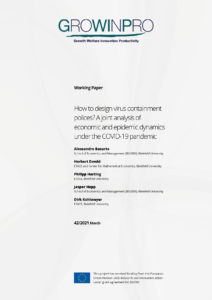We analyze the impact of different designs of COVID-19 related lockdown policies on economic loss and mortality using a micro-level simulation model, which combines a multi-sectoral closed economy with an epidemic transmission model. In particular, the model captures explicitly the (stochastic) effect of interactions between heterogeneous agents during different economic activities on virus transmissions. The empirical validity of the model is established using data on economic and pandemic dynamics in Germany in the first six months after the COVID-19 outbreak. We show that a policy inducing switches between a strict lockdown and a full opening-up of economic activity is strictly dominated by alternative policies, which implement either a much more cautious opening at the end of the lockdown or a more or less continuous light lockdown with only minor restrictions of economic activity. Furthermore, also the ex-ante variance of the economic loss suffered during the pandemic is substantially lower under these policies. Keeping the other policy parameters fixed, a variation of the consumption restrictions during the lockdown induces a trade-off between GDP loss and mortality. Finally, we study the robustness of these findings with respect to the occurrence of a more infectious virus mutation.

 How to design virus containment polices? A joint analysis of economic and epidemic dynamics under the COVID-19 pandemic
How to design virus containment polices? A joint analysis of economic and epidemic dynamics under the COVID-19 pandemic